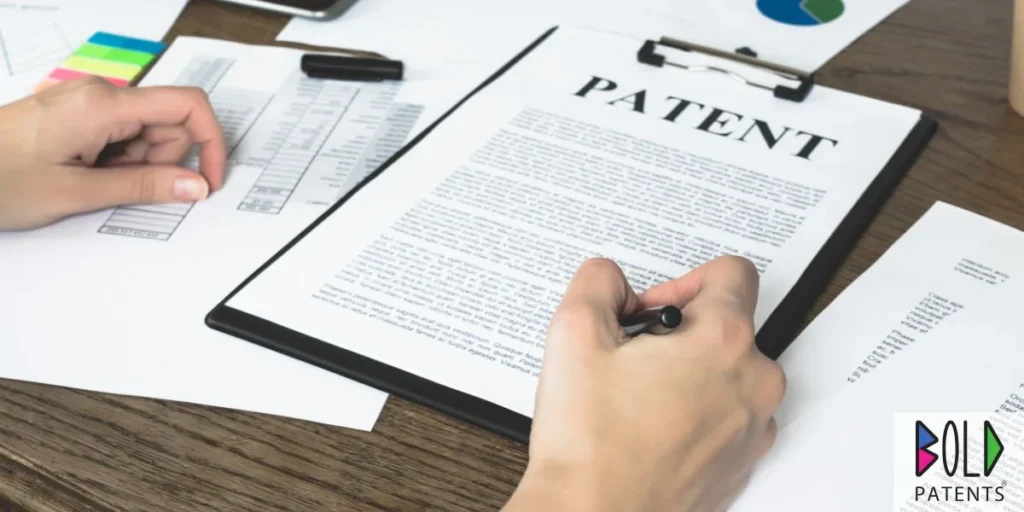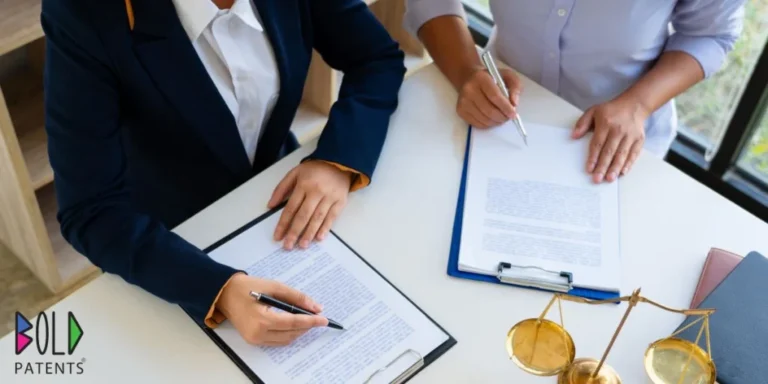Patent Prosecution Lawyer
Patent prosecution refers to the process of applying for a patent. This covers the patent search, the drafting of the application, applying, any follow-up requirements with the U.S. Patent and Trademark Office (USPTO), and then the issuance or rejection of the patent. Securing invention protection through a patent is much easier with a patent prosecution attorney to defend your rights.
The term patent prosecution may make it seem like a high-stakes and overwhelming process. While the process can be complex, it does not involve litigation like some might assume. Prosecuting a patent with the USPTO is still a complicated process, however, with lots of requirements within the application and filing process. Legal support can help each step of the way.

Working With Dedicated and Experienced Patent Prosecution Attorneys
Bold Patents supports those with bold ideas. We work with business owners, entrepreneurs, and independent inventors to help them with patent prosecution. Our team knows how crucial patents and intellectual property protection is to maintain or establish the competitive edge of your innovation. We have helped visionaries like you patent inventions for years.
Our team can provide you with personalized legal care that considers your industry, business goals, and invention. There are numerous steps in the patent prosecution process, and we can help with each of them. We can provide counseling and professional advice regarding your invention and the ideal way to protect it.
When you work with our team, we can create an application that avoids costly and time-consuming errors. If there are issues with your application during the process, we can address them quickly.
What Is the Patent Prosecution Process?
Patent prosecution involves several steps prior to, during, and after filing an application. Understanding these steps is useful when navigating the prosecution process. The steps may include:
- Considerations When Determining Patentability. First, you must ensure that your invention is patentable. It must meet the general definition of a patent, including being an innovative, non-obvious invention that is usable and not theoretical. If your invention does not meet the requirements of a patent, it may qualify for other types of intellectual property protection, such as copyright or trademark.You must also conduct a patent search and an art search. An art search looks at publicly disclosed inventions. A parent search reviews inventions already patented with the USPTO. The patent search process requires a fee with the USPTO. If your invention has been publicly disclosed or a patent for it would infringe on the rights of another patent, a patent will not be granted for your invention. Patent searches are often wide-reaching and could include foreign patents.
- Selecting Patent Types. The type of patent you apply for will impact the requirements for your application. You can choose between utility, design, and plant patents. Utility patents, which protect a unique process, machine, or function of an invention, are the most common type of patent. Design patents protect the innovative appearance of a product. Plant patents protect a new plant variety.In some cases, your invention may fit more than one type of patent. You may be able to apply for more than one, or you may need to determine which is more important to the use and profitability of the product.
- Documenting the Invention and Preparing the Application for filing. Part of preparing for the application involves thoroughly documenting the invention. This includes descriptions, specifications, how it is used, and its appearance. It can include a drawing, rendering, or prototype. Then, gather this information and the forms for your application. Your application is submitted online to the USPTO, along with the appropriate filing fees.
- Following the Application’s Progress. You want to be aware of your application’s status as it progresses through the USPTO. If there are errors or insufficient information, it is crucial that you respond to these notices quickly to avoid the application being abandoned.
FAQs
What Does a Patent Prosecution Attorney Do?
A patent prosecution attorney is a legal professional who focuses on the process of prosecuting a patent or applying for a patent with the USPTO. Patent prosecution attorneys typically:
- Determine the patentability of an invention and which parent type applies
- Conduct a patent search to determine if applying for a patent would infringe on any other patents
- Provide advice on the applications of a patent compared to other IP protection
- Prepare the application, including all the documentation of the invention that is needed
What Is the Difference Between Patent Litigation and Patent Prosecution?
The difference between patent litigation and patent prosecution is that patent litigation is the enforcement of a patent’s rights when infringement or disputes occur, while patent prosecution is the process of applying for and maintaining a patent.
Patent litigation involves legal claims, while patent prosecution is a complex but non-litigious process. Patent prosecution may involve USPTO proceedings and interviews to grant you a patent. Patent litigation only occurs when you already have a patent and another person or entity is infringing on the patent.
Is a Patent Attorney the Same as an IP Attorney?
There is some overlap with patent attorneys and IP attorneys but they have unique abilities and knowledge. Patent attorneys have knowledge and licensure that is specific to handling patents and patent applications. They may not have broader knowledge about all areas of IP (intellectual property) law. IP attorneys have knowledge about several areas of IP law but may not have intricate knowledge of patents or be licensed to handle the USPTO and file patents.
Why Should I Hire a Patent Prosecution Attorney?
Hiring a patent attorney helps you avoid costly errors, meet the legal requirements of the application, and increase your chances of securing a patent. An attorney can review your invention, determine if it can be patented, and determine what will provide the most protection for your creation, including other types of IP protection.
While an attorney cannot guarantee any result, their support and knowledge of complex IP laws can help you present your invention more effectively.
Protecting Your Intellectual Property With Skilled Attorneys
The team at Bold Patents can help you with patent prosecution from start to finish. We believe in helping innovators create bold solutions. Contact Bold Patents today and learn how we can help you.
